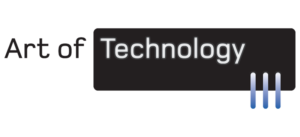Art of Technology (AoT) provides design and development services for a wide range of applications. Here, the company outlines some key projects it has contributed to in the medical device and space-flight industries to demonstrate how its high-quality solutions can help you.
Medical device: early diagnosis of CVD «PHOCNOSIS»
Cardiovascular Disease (CVD) is the leading cause of death in the EU, accounting for 1.9 million deaths, representing 40% of all deaths in the EU each year.
Despite costs of almost €196bn per year, CVD can be successfully treated and managed if detected early. The goal of the «PHOCNOSIS» project is the development and pre-clinical validation of a nanotechnology-based, handheld point-of-care testing (POCT) and analysis procedure and device, for fast and early diagnosis of cardiovascular diseases (CVD).
AoT is responsible for the design and development of the electronics, mechanics, software and system integration of the POCT device. Using new nano-photonic sensing techniques developed by the Polytechnic University of Valencia, it should be possible to measure and evaluate the concentration levels of different markers for cardiovascular disease in less than 10 minutes using only a few drops of the patient’s blood.
Active medical implant: an intelligent fluid pump
Patients with liver disease, congestive heart failure and certain cancers can suffer from Ascites, the accumulation of excess fluid in the abdominal cavity. Certified in 2011, the alfapump® is an implantable pump that automatically and continually collects the excess fluid and moves it into the bladder (up to 2.5l per day) where it is eliminated from the body in the normal way.
With its wireless smart charger, the alfapump reduces the number of hospital visits required, freeing up hospital beds and staff. It also reduces the risk of infection and affords the patient a new level of freedom and significantly improves the quality of life.
AoT provided a complete re-design of electronics and firmware (only one rigid-flex and no connectors) for a new generation of pumps, including:
- Software development for motor controller
- Develop recovery algorithm (in case of Hall sensor failure)
- Design and development of wireless charger (first 2 generations)
- Revision of wireless communication protocol
- Optimisation of energy transfer system
- Initial technical documentation for CE submission
- Ongoing support (as and when required)
Technology study: characterisation of 3D-MID for space applications
3D-MID Technology enables the integration of mechanical, electronic, optical and thermal functions into three-dimensional designs via selective metallisation offering a high-geometric design freedom and supporting the miniaturisation of electronic devices.
Applications such as sensors, actuators, switches, antennas, hearing aids and other medical devices can benefit from the manufacture of complex structures and shapes offering potentially significant savings in size and weight that simply cannot be realised with conventional electronic manufacturing methods.
Objectives of the project included:
- Characterisation of the suitability of 3D-MID technologies, manufacturing techniques, processes and materials for space applications
- Identification of critical issues and recommendations, with respect to possible next steps, changes or modifications required, lessons learned and conclusions
- Proposing follow-on activities to help increase the technology readiness level (TRL) for applications in space
Phase one of the work included:
- Technology review and selection of space applications
- Evaluation of manufacturing processes and selection of materials
- Design, manufacturing and characterisation
Phase two of the project included:
- Manufacturing and assembly of parts
- Characterisation of the manufactured parts
- Results analysis, identification of critical issues and future developments
Space application: STIX – detector electronics module «STIX-DEM»
AoT was awarded a contract by the European Space Agency (ESA) for the design, development, production and supply of the detector electronics module (DEM) to be used in the «STIX» instrument, a Swiss experiment onboard Solar Orbiter, which scheduled for launch in 2020 and will travel to within 45 million km of the Sun (a quarter of the distance between the Earth and the Sun).
The spacecraft will travel closer to the Sun than any other of its type to date, allowing a portion of the surface to be observed for longer periods of time without interruption. The Solar Orbiter’s mission will address the central questions of helio-physics such as how does the Sun create and control the heliosphere?
Developed and built under the direction of the University of Applied Sciences in Northwestern Switzerland, the «STIX» instrument will provide observations of the sun with unprecedented sharpness and direct measurements of solar winds and charged particles close to their point of origin. This new orbit will allow us to study the Earthside facing away from the Sun and, for the first time, the polar regions.
«STIX» will contribute to understanding the mechanisms behind the acceleration of electrons at the Sun and their transport into the interplanetary space. «STIX» will also play a key role in linking remote-sensing and in-situ observations on Solar Orbiter with imaging spectroscopy of solar thermal and non-thermal X-ray emissions providing quantitative information on the timing, location, intensity and spectra of accelerated electrons as well as of high temperature thermal plasmas, which are mostly associated with flares or micro-flares in the solar corona and chromosphere.

